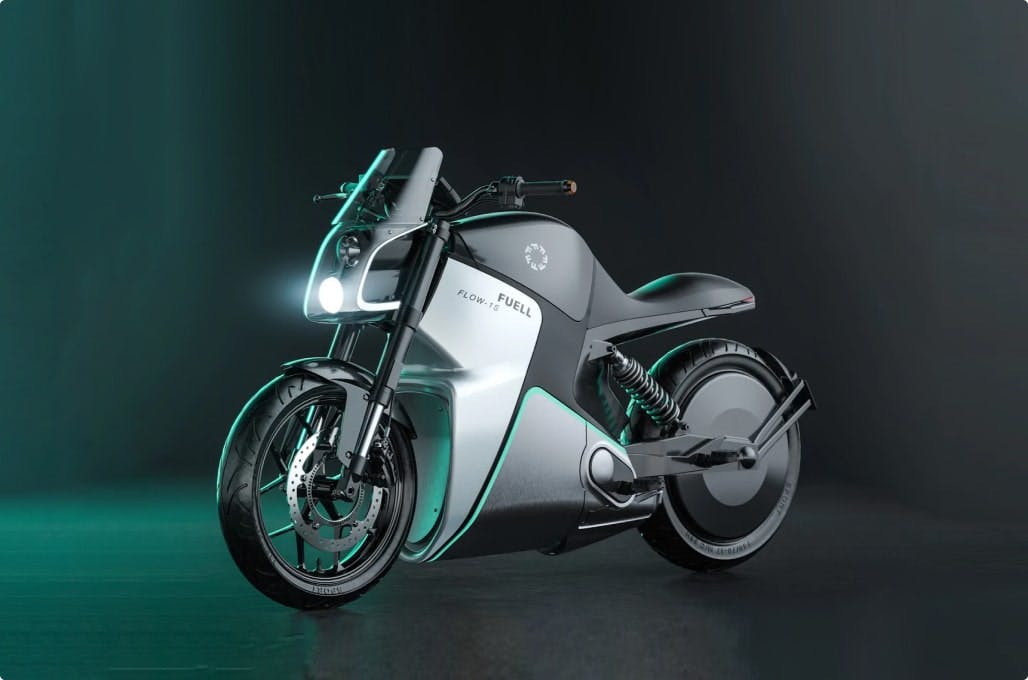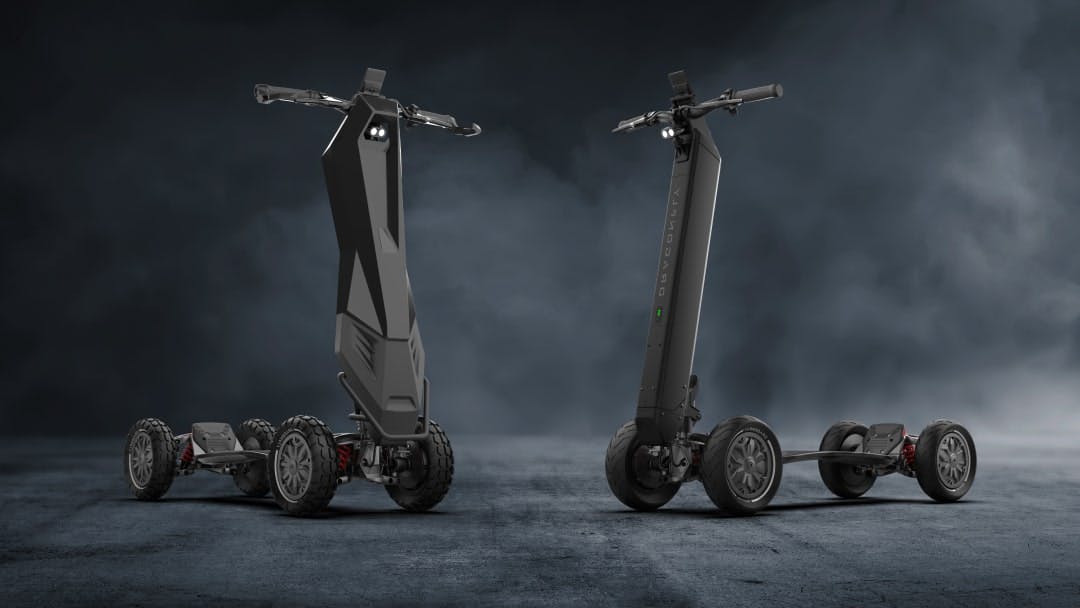The Rich History of Flying Cars

Last updated on May 2nd, 2024
Dikran Seferian
For much of the past century, visions of the future included flying cars zooming around futuristic cityscapes. It’s safe to say that we haven’t achieved that reality—yet. However, people have been trying to put cars in the sky throughout recent history. The history of flying cars is surprisingly long, going all the way back to the 15th century. So who made the first flying car? What was the first flying car? And when was the first flying car made? All those questions and more will be answered in this article.
Early Visionaries and Concepts of Flying Cars
1400s - Leonardo da Vinci’s Aerial Screw
In the 15th century, Leonardo da Vinci came up with a design known as the Aerial Screw, a visionary concept that served as a precursor for future inventions. As the name suggests, the concept resembles a giant screw or spiral that creates lift when rotating rapidly. This invention was a testament to Da Vinci’s ingenuity and innovative approach to aviation—a sign that he was well ahead of his time.

While the Renaissance polymath never really built and tested the Aerial Screw, the design remains an iconic symbol of early innovations in aviation—and the first milestone in the history of flying cars. Today, you can see physical models of it in museums and exhibitions around the world.
1800s - Jules Verne’s Literary Influence
The 19th century came with a surge of interest in technology as well as curiosity about the future. This was evident in the works of famous authors such as Jules Verne. In novels like Clipper of the Clouds and Master of the World, Verne talked about cars that could fly in the air, travel on land, and dive underwater. For example, Clipper of the Clouds featured a fictional aircraft known as the “Albatross,” which could carry passengers from one continent to another at high speeds.
While Verne’s ideas were more of a fantasy than anything else, they captured the public’s imagination and sparked interest in the possibilities of aerial transportation. They also played a major role in popularizing the concept of flying cars in science fiction literature.
20th Century Inventions and the World’s First Flying Car
1917 - Curtiss Autoplane
Invented by Glenn Curtiss in the early 20th century, the Curtiss Autoplane was among the first attempts to create a flying car. It featured an aluminum chassis with a propeller at the rear and three wings spanning 40 feet.

As with today’s concepts, the idea was to drive it on roads and fly it like an aircraft. And while ground tests were successful, the Autoplane never achieved sustained flight except for a few short leaps. Only one prototype of the car was ever built.
Despite its failure to fly, Curtiss’ invention laid the groundwork for future developments. In fact, if you look up “who invented flying cars” or “when were flying cars invented,” you’ll see that the first answer to pop up is about the Curtiss Autoplane.
1937 - Waldo Waterman’s Aerobile
Another 20th-century invention in the history of flying cars was the Aerobile. Designed by Waldo Waterman in 1937, this three-wheeled vehicle was powered by a 100-horsepower Studebaker engine. Folding wings and a detachable tail section would allow it to switch between ground and flight modes. And just like the Autoplane, the Aerobile had its propeller mounted on the back.

While several prototypes were built and tested, lack of funding as well as practical limitations prevented the Aerobile from achieving commercial success. Nonetheless, Waterman’s pioneering work inspired future innovations in the design and engineering of flying cars.
1946 - Robert Fulton’s Airphibian and Henry Dreyfuss’ ConvAirCar
1946 was a huge year in the history of flying cars, with not one but two inventions going down in the records: the Airphibian (pictured below) and the ConvAirCar.
Developed by Robert Fulton, the Airphibian featured a detachable tail and wings, and a propeller that could be towed inside the fuselage. What’s interesting about it is that Fulton adapted a plane for road travel, rather than adapting a car for flight.

With a 150-horsepower and six-cylinder engine, the Airphibian could drive at 50 miles per hour and fly 150 miles per hour. It even completed test flights and was the world’s first flying car to receive certification from the Civil Aeronautics Administration (which is now the Federal Aviation Administration). However, Fulton couldn’t secure financial backing to fund production, and the project was binned.
Around the same time, Henry Dreyfuss had his own lightbulb moment by inventing the ConvAirCar (short for Consolidated Vultee Aircraft Car). The vehicle had a gas mileage of 45 miles per hour and could fly for one hour. It was essentially a two-door sedan with a detachable airplane unit on top. While the ConvAirCar showed great potential, it never made it past the testing phase as it crashed on its third flight, resulting in a fatality.
1949 - Moulton Taylor's Aerocar
Perhaps the most successful flying car invention of the 20th century came in the late 1940s. It was Moulton “Molt” Taylor’s Aerocar. The vehicle sported a detachable aircraft fuselage with wings and a pusher propeller, and could seamlessly transition between road and air travel without interruption.

Test flights were an absolute success, with the Aerocar cruising at 120 mph in the air. Ultimately, the aerial vehicle was the second ever to be certified by the CAA. Ford Motor Co. even planned to market the car. However, due to the decade’s oil crisis, those plans were dashed. But that didn’t stop the Aerocar from becoming an inspiration for later inventions—just as it was inspired by the Airphibian.
1958 - John Frost’s Avrocar
The Avrocar was an experimental flying saucer-shaped aircraft designed for military use. John Frost, the inventor, worked as a product designer at Avro Canada.

His intention was to build supersonic and high-altitude fighter-bomber aircraft with vertical takeoff and landing capabilities. While the United States Air Force agreed to finance further development, the Avrocar failed to work as intended.
1973 - AVE Mizar
Dreams to soar continued in the second half of the 20th century, eventually resulting in the invention of the AVE Mizar. This was a project by Advanced Vehicle Engineers, who developed the concept by attaching a Ford Pinto to the airframe of a Cessna Skymaster, a plane that featured a twin-engine configuration.

As promising as it seemed, the Mizar faced a number of setbacks in development. The project came to an end following a fatal crash during a test flight, which killed both the pilot and the inventor.
21st Century Progress and Challenges
Early 2000s - Moller Skycar
The turn of the century signaled a new era of flying vehicle development—one fueled by technological advancements. We started seeing more futuristic designs as well as efforts to make flying cars more practical. It was a period where the narrative shifted from the possibility of flying cars to how they could be integrated into the transportation ecosystem.

One flying car invention that comes to mind is the Moller Skycar. Developed by Paul Moller, the Skycar prototypes came with innovative features like ducted fans, multiple engines, and a compact design suitable for both land and air travel. Moller came up with two different models of the Skycar (pictured left to right): M200M and M400. Despite ambitious demonstrations, however, financial difficulties prevented the Skycar from hitting the skies.
Another notable invention was the AeroMobil, featuring a very sleek design and aerodynamic elements. The vehicle had the ability to switch between car and aircraft in less than three minutes. It was on a whole other level of sophistication. The aim was not just to present a prototype that could drive and fly but also to create a vehicle that could do so safely and legally.

After years of development, the first AeroMobil model took to the skies in 2013. Variants 3.0 (pictured below) and 4.0 followed later, with the 4.0 having a hybrid power based on the Subaru boxer engine. Unfortunately, the lack of new financing caused the company to shut down in 2023.
Recent Innovations
In recent years, the history of flying cars saw a massive surge in development, with many startups working on new concepts and prototypes. Advanced technologies like electric propulsion and autonomous navigation systems are playing a major role in these innovations, promising greater safety, efficiency, and accessibility.
The eVTOL (electric vertical takeoff and landing) mechanism is taking center stage here. You can say that it’s the greatest development in flying car history. As a matter of fact, electric flying car models like Doroni H1-X (pictured below), Alef Model A, and ASKA A5 are already approved and available for preorder.
The Doroni H1-X, for example, provides semi-autonomous navigation, precision controls, as well as safety sensors. It also offers a lightweight carbon fiber airframe and a 270-degree window for panoramic views. With the H1-X being one of the most promising projects so far, things are looking up for flying cars.

Challenges: Why Flying Cars Aren’t Commercialized Yet
Aerial cars have been on the verge of commercialization for quite some time. But what’s keeping them? As you may have noticed, many of the flying car projects throughout history were cut short due to insufficient financing. Of course, that’s not the only obstacle preventing them from being commercially available.
To begin with, safely integrating flying cars into airspace is a major challenge. This means guaranteeing the safety of passengers and bystanders. It also involves forming traffic management systems for aerial vehicles and establishing certification processes for the drivers (or pilots, in this case).
Another concern is the possibility of flying vehicles roaming over residential areas in low altitudes, raising privacy issues— nobody wants a car hovering over their backyard. This will call for special regulatory attention and perhaps the establishment of airspace limits. In urban areas, noise pollution is already a problem. And while the latest eVTOL concepts have quiet electric propulsion, the accumulated noise from multiple flying cars can add to existing levels of noise pollution.
Other challenges hindering the commercialization of flying cars include infrastructure limitations, such as the lack of vertiports in urban regions, and economic issues—the expensive nature of aerial vehicles limits their accessibility to most people.
The Future of Flying Car Development
With the recent advancements in technology, engineering, and urban mobility, the future of aerial cars is looking brighter than it has ever been. Ongoing innovations in materials, propulsion, and navigation are making it more likely for flying vehicles to become a viable mode of transportation. Startups and established companies alike are actively working on prototypes while agencies like the FAA are developing frameworks for integration and certification.
Urban air mobility initiatives, along with rising public interest and investment, point toward a future where aerial vehicles are an integral part of transportation systems. While challenges like infrastructure limitations currently exist, the collective efforts of everyone involved are driving progress toward making flying cars a tangible reality.
To Wrap Up
From Leonardo da Vinci’s Aerial Screw to current projects like the Doroni H1-X, the history of flying cars is a rich one. Many people lost their lives trying to make flying vehicles a reality, but their dreams live on. And we are lucky enough to be alive in a time when we’re actually about to witness these aerial marvels flying above us—or perhaps fly them ourselves.







